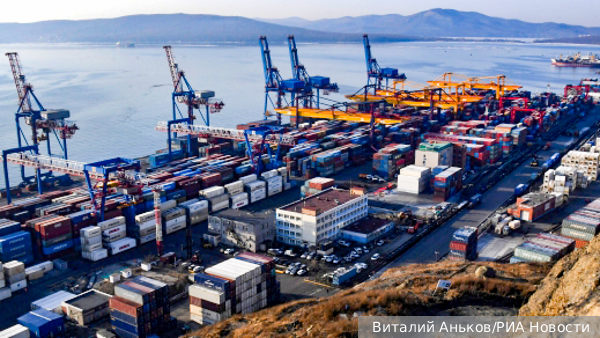
Russia's seaports reorientate cargo flow from Europe to Asia
Container shipments from Northwestern ports have continued to recover after falling sharply following the outbreak of hostilities in Ukraine. In the first two months of the year, they increased by 121%, although in February they were still 28% behind the monthly average for 2021. Market participants attribute this growth to the emergence of a sufficient number of maritime services to St. Petersburg and the equalization of prices for container transportation between the Far East and the North-West. Transporting containers by rail to the east was also difficult, leading to export cargo being redirected to an alternative destination.
According to Denis Ilatovsky, senior vice president of Delo Group of Companies, container turnover in North-West ports increased by 121% in January-February compared to the same period in 2023. However, it has not yet returned to pre-crisis levels. The recovery was determined by several factors, including the replacement of departed container lines by new operators, a reduction in transportation costs to a competitive level with the ports of the Far East, and the emergence of imports of Chinese passenger cars in containers.
The ports of the North-West, which were originally oriented towards Europe, suffered the most from the withdrawal of global lines and the closure of the largest container hubs for Russian cargo in the spring of 2022.
Container turnover decreased significantly in the first half of 2022 compared to 2021, with a reduction of 60-85% . By the end of the year, Mortsentr-TEK reported a decline in container cargo transshipment at the Big Port of St. Petersburg, Russia's largest container port in 2021, by 54.7% in TEU and 64.1% in tons. Similarly, the port of Ust-Luga experienced a decline of 38.2% and 50.5%, respectively, while the port of Kaliningrad saw a decline of 71% and 72.8%.
However, in the first quarter of 2023, operators noticed signs of market recovery and an increasing interest in container lines new to the Russian market for the ports of the region . Many Chinese, Turkish, and Middle Eastern companies have emerged, as well as Russian market participants who have mastered maritime services. According to PortNews, the transshipment dynamics (in TEU) in the Baltic Basin changed direction in the second quarter of 2023. Container transshipment at the terminals of the Big Port of St. Petersburg increased by 25.5% in the third quarter, 150.3% in the fourth quarter, and 13.1% in 2023, reaching a total of 1.05 million TEU.
According to Global Ports' General Director, Albert Likholet, the container turnover of the North-West ports was approximately 179-180 thousand TEU per month in 2021. However, by September 2022, it had dropped to below 40 thousand TEU.
In January 2023, it only slightly increased from this level to 43-45 thousand TEU. In December, the number of TEUs increased to 121 thousand, and by February 2024, it had surpassed the monthly total for any month in 2023, reaching 129 thousand TEUs.
Mr. Likholet attributes this to several factors, including destination saturation, logistics support for specific industries, and competition with alternative routes. During TransRussia 2024, the speaker noted that transportation costs in the Far East and North-West have levelled out in the past two months. Freight rates have been decreasing throughout the last year, particularly in the North-West, and have now stabilised at around $4.5-5 thousand per container. The speaker suggests that these rates will remain stable, but acknowledges that upward adjustments are possible.
Some market participants are considering increasing tonnage and using vessels with deep draft, which the Ust-Luga terminals can currently accommodate. According to Albert Likholet, Global Ports may consider deepening the port in Ust-Luga if several carriers announce the placement of container ships with a capacity of more than 4 thousand TEU on the line and confirm the volumes with guarantees. In his opinion, container transportation in the North-West will continue to grow.
Despite the growth in container turnover, a source close to St. Petersburg stevedores urges caution rather than optimism. They highlight the decline in total tonnage in the Baltic basin due to the outflow of cargo.
According to the Mortsentr-TEK bulletin, the cargo turnover of the Baltic Basin for the first two months of 2024 was lower than both the corresponding pre-crisis period in 2022 (by 0.4%) and January-February 2023 (by 4%).
Mikhail Burmistrov, the head of Infoline-Analytics, highlights that the recovery of container turnover in the North-West is partly due to challenges encountered when transporting containers by rail towards the Far East and South. According to Kommersant, the number of scheduled container trains to the Far East was significantly reduced at the end of 2022 and again in March. This reduction led to a significant increase in container delivery prices to the eastern part of the country.
A source in the industry cited by the newspaper Kommersant suggests that Far Eastern container export volumes are being cannibalized by the North-West. Mr. Burmistrov suggests that the growth in the North-West region is linked to the emergence of an adequate number of maritime services. He believes that it is possible to achieve the 2021 level this year.
